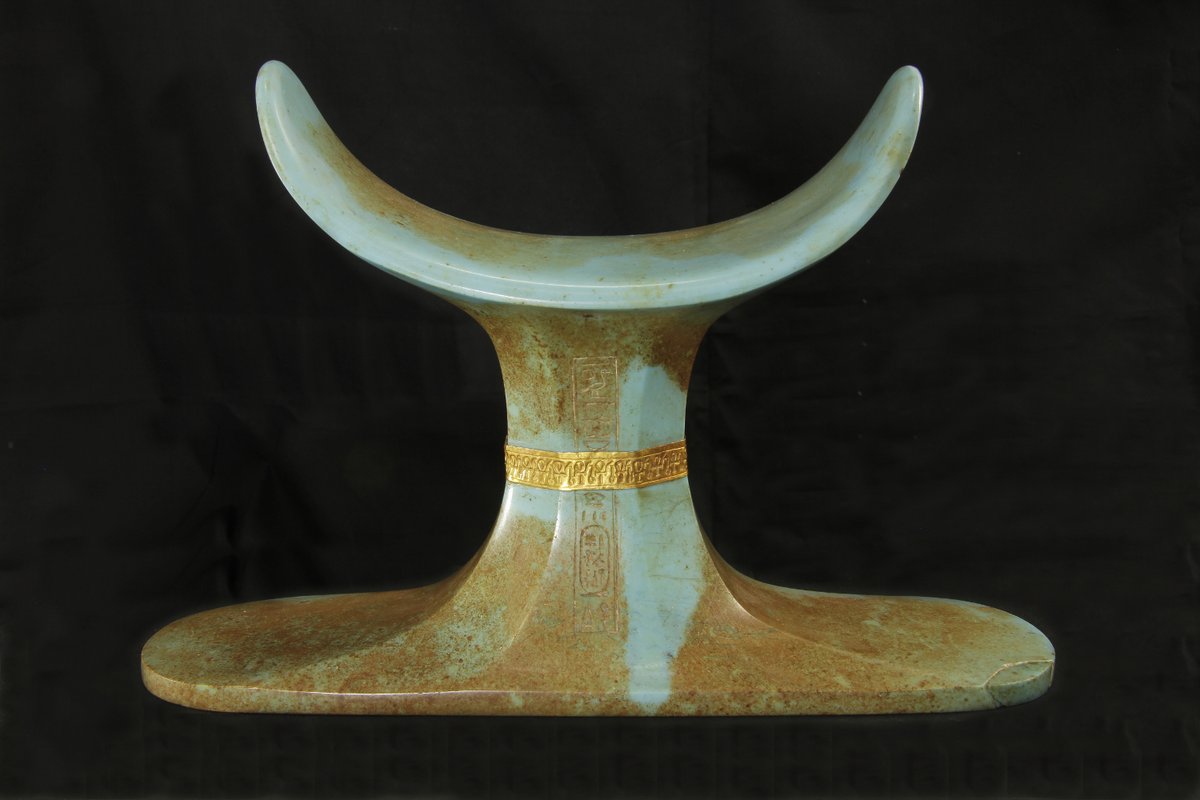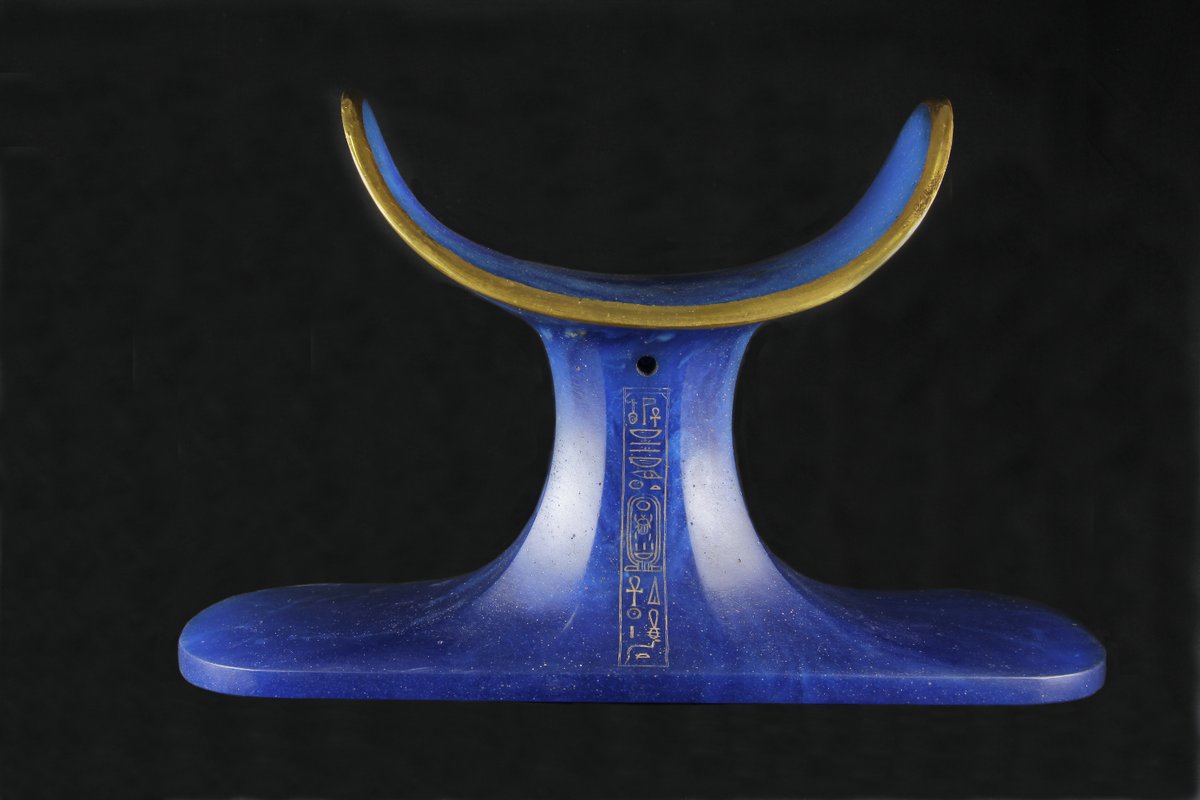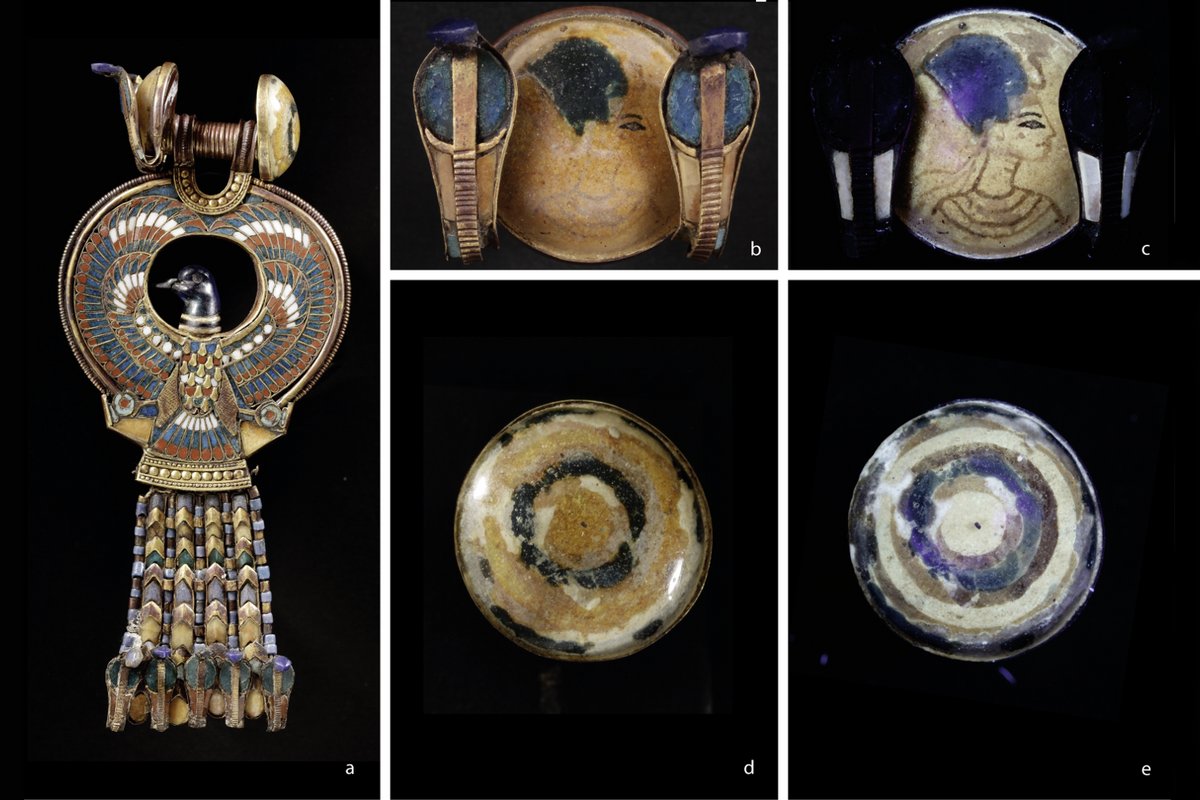Early glass in Egypt
Perhaps the reason why glass objects from Tutankhamun's tomb have received surprisingly little attention so far is that only a few of them have come down to us; a circumstance that Howard Carter already commented on with disappointment when he reappraised the finds.
In recent years, in addition to three preserved vessels, the extraordinarily large head rests weighing almost 2 kg and a glass writing palette of Tutankhamun measuring over 40 cm in length have been subjected to a technological and scientific autopsy. In the process, optical phenomena and features of manufacture were identified that can contribute decisively to a better understanding of early glass processing in the New Kingdom. These observations have been taken up and discussed in several publications; experimental trials to evaluate the findings and their interpretation are jointly planned, but could not be implemented so far. Another focus of the ongoing investigation is on the thousands and thousands of small glass inlays that elaborately decorate almost every object of the tomb furnishings using the cell inlay technique. They paint a unique picture of technological diversity and of special features in design and use. The glass inlays decorate objects made of calcite, the chariots, weapons and furniture, including the ritual couches or the golden throne, the golden coffin, the death mask and significant amounts of jewellery and other goldsmith's work.
Among these - albeit this time en miniature - are once again true gems to be discovered: small reverse glass (inlay) paintings that complement the repertoire of coloured inlays. Well-known and hitherto unrecognised examples have been preserved on the central coffin, the golden throne, on the inscriptions of the mummy bands and the small visceral coffins as well as various pieces of jewellery from the burial treasure.
Two examples of the king's ear jewellery are found, which are special in many respects: Polychrome miniature portraits of the king, painted on the backs of circular inlays less than a centimetre in diameter.
Portraits of kings are scarcely attested in the archaeological record in Egypt and are only found in the form of practice pieces by various craftsmen or painters, and even as artistic decoration of a piece of jewellery they are so far unique.
In this study, other objects - the coffin from KV 55 and the third, inner coffin of Juja - have so far been included for comparison, even though in these examples the back-painted inlays are not only made of glass, but partly also of calzite or quartz/rock crystal. Additional attention is paid to the numerous transparent eye inlays made of the above-mentioned materials, which have been used in different variations since the 4th Dynasty.
The aim of the study is to grasp, at least to some extent, the genesis of various manufacturing and decoration techniques, but also to trace and demonstrate the development of stylistic and technological variations.
- Copy link
- Print article
Contact
- Katja Broschat
- +49 6131 8885-0
Project Period
- Since 01.2016
Monographien
- K. Broschat, »Polychrom und polymorph – Glas aus dem Grab des Tutanchamun«, in Vorb.
Aufsätze
- K. Broschat, Hintergründig? Weitere Objekte mit Hinterglasmalereien aus dem Grab des Tutanchamun, Journal of Glass Studies 65, 2023.
- K. Broschat / Th. Rehren, Makellos - Ein gläsernes Schreibwerkzeug des Tutanchamun und Anderes, Mitteilungen des Deutschen Archäologischen Instituts Kairo 78, 2023.
- K. Broschat, Glas aus dem Grab des Tutanchamun. Ein Überblick. In: Annales du 21e Congrès de l’Association Internationale pour l'Histoire Du Verre, Istanbul 3.-7. September 2018 (Istanbul 2021).
- Th. Rehren / K. Broschat, A large turquoise glass writing palette from Tutankhamen’s tomb. Journal of Glass Studies 62, 2020, 263-266.
- K. Broschat, Hintergründig! Hinterglasmalerei aus dem Grab des Tutanchamun. Restaurierung und Archäologie 10, 2017, 63-94.
- K. Broschat / Th. Rehren, The Glass Headrests of Tutankhamen. Journal of Glass Studies 59, 2017, 377-380.
- K. Broschat / Th. Rehren / Ch. Eckmann, Makelloses Flickwerk – Die gläsernen Kopfstützen des Tutanchamun und Anderes. Restaurierung und Archäologie 9, 2016, 1-24.
Katalogbeiträge
- K. Broschat, Beauty in Detail – Glass from the Tomb of Tutankhamun. In: S. Connor / D. Laboury (Hrsg.), Tutankhamun. Discovering the forgotten Pharaoh [Ausstellungskat. Liège] (Liège 2020) 82-85.
- K. Broschat, La beauté dans le détail – Le verre dans la tombe de Toutankhamon. In: S. Connor / D. Laboury (Hrsg.), Toutankhamon, à la recherche du pharaon oublié [Ausstellungskat. Liège] (Liège 2019) 82-85.
Andere
- Katja Broschat, Gläserne Kissen und verborgene Bilder. Glasfunde aus dem Grab des Tutanchamun. Antike Welt 6 (2022).


![[Translate to Englisch:] [Translate to Englisch:]](/fileadmin/_processed_/e/a/csm_Abb_03_Glas_Aegypten-1_ef1cf3def1.jpg)
